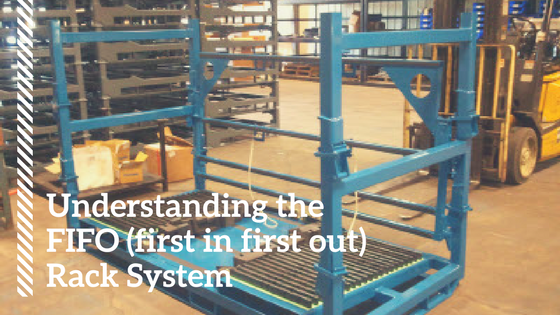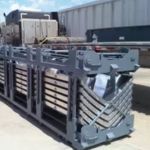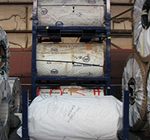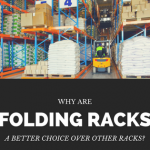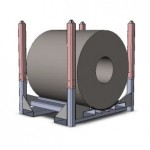Understanding the FIFO Rack System: A Smart Approach to Warehouse Efficiency
In today’s fast-paced supply chain, efficient inventory management is the cornerstone of success. One system that plays a pivotal role in maintaining product freshness, reducing waste, and optimizing storage space is the FIFO (First In, First Out) rack system. Designed to ensure that the oldest inventory is moved out first, FIFO systems are essential in industries where product shelf life, regulatory compliance, and operational speed are critical. From food distribution and pharmaceuticals to e-commerce and manufacturing, FIFO rack systems provide businesses with a structured approach to product flow. In this article, we’ll explore the key components, benefits, types, and real world applications of FIFO storage systems and why they are more relevant than ever.
What Is a FIFO Rack System?
A FIFO rack system is a type of storage solution where products are loaded at one end and retrieved from the other, ensuring that the first inventory placed into the system is also the first to be picked or shipped out. This method is particularly important for perishable goods, temperature-sensitive products, and high-turnover items where proper rotation minimizes waste and maximizes efficiency.
Unlike static shelving or LIFO (Last In, First Out) setups, FIFO systems enable continuous movement of inventory. As a result, they support consistent product rotation, minimize write-offs due to expiration or obsolescence and improve order accuracy.
Benefits of Implementing FIFO Racks in Warehousing
- Reduces Waste and Spoilage: The most notable benefit of FIFO storage is its ability to reduce expired or obsolete stock. By ensuring that the oldest items are picked first, businesses avoid the costly consequences of storing unsellable or out-of-date goods especially in the food, beverage and pharmaceutical sectors.
- Enhances Space Utilization: FIFO racks promote dynamic product movement. This means less idle inventory occupying shelf space and more efficient turnover. As stock flows consistently, the overall warehouse footprint is optimized.
- Improves Order Accuracy and Speed: In high-volume environments such as e-commerce or retail centers, FIFO systems streamline order picking. Workers or automated equipment can access the oldest product immediately without disturbing other inventory, which leads to faster and more accurate order processing.
- Supports Compliance with Safety and Quality Regulations: Industries that must comply with FDA, ISO or GMP regulations benefit greatly from FIFO systems. These systems help maintain traceability of batch numbers and expiration dates, ensuring quality standards and legal compliance are met.
- Offers Strong Return on Investment: Although the initial investment in a FIFO rack system can be significant, businesses often recover their costs quickly due to reduced product loss, improved labor efficiency, and faster order fulfilment. Many reports achieving ROI within 12 to 18 months.
Key Components of FIFO Rack Systems
Rack Structures:
Rack structures are the backbone of any FIFO racks system. These structures provide the essential support for storing goods in an organized and accessible manner. Depending on the specific needs of a warehouse or distribution center, there are various types of rack structures to choose from, including selective racks, push-back racks, drive-in racks and pallet flow racks.
Selective racks are designed for easy access to each pallet individually. They are ideal for environments with a wide range of products (high SKU environments) because they allow for quick and selective retrieval of specific items.
Rollers and Conveyors:
In pallet flow systems, rollers are often installed within the rack structure on inclined lanes. The force of gravity allows pallets to move forward automatically. As a result, the oldest stock (first in) is consistently at the front, ensuring it is the first out.
Conveyors can be integrated into the rack system, connecting different parts of the warehouse. They automate the movement of goods, ensuring efficient and accurate product flow. Conveyors are especially beneficial in high-throughput operations where rapid, FIFO-compliant order fulfillment is crucial.
Gravity Flow Systems:
Gravity flow systems are the heart of achieving FIFO in rack systems. These systems rely on the force of gravity to move products from the loading end to the picking end in a sequential manner. The primary components of gravity flow systems are inclined lanes or tracks. These lanes can be equipped with rollers, skatewheel conveyor beds, or similar mechanisms.
The magic of gravity flow systems is that they automatically advance products, so the items loaded first are the first to be picked. This is particularly advantageous in fast-paced operations where maintaining the sequence of products is critical, such as order picking for e-commerce fulfillment.
Picking and Loading Mechanisms:
Picking and loading mechanisms determine how products are safely and efficiently retrieved from the pallet racking system for distribution or production. The choice of mechanism depends on several factors, including the type of products, order volume and warehouse layout.
In manual operations, workers may use forklifts, hand trucks, or other equipment to pick items from the racks. They load the items onto these devices and transport them to their destination. This approach is suitable for businesses with lower order volumes or larger, heavier products.
Types of FIFO Rack Systems
The following are the major types of FIFO racking systems:
- Selective pallet racks: Selective pallet racks offer easy access to stored pallets, boxes or cartons without the need to displace another rack. These pallet racks require a large number of aisles, which helps in lowering storage density. The inventory racking systems are ideal for storing food, medicines, and other frequent ready-to-go items.
- Gravity flow systems: Gravity flow systems feature incline rollers or wheels on racks. This allows the product to slide from the back loading aisle to the front picking aisle. Here the pallets are loaded from the back of the system, which is slipped to the other end for picking. The next pallet slides into the picking position after the first pallet is unloaded. This inventory system features carton flow and pallet flow, which provides ample volume utilization. Gravity flow systems are ideal for storing materials having expiry dates including drugs, foods, and beverage. These systems can be configured as stand-alone systems or multi-rack modules. These flow systems are ideal for high volume piece-pick or case pick applications, too.
- Drive-through racks: Drive through rack features support rails, which are engineered to store boxes or pallets. These support rails are attached to uprights and can be easily accessed by forklifts. Typically, forklifts are raised to the level of support rails, and positioned on a selected storage locations. There are no picking aisles, which means these racks offer a high storage density. No wonder, drive-through racks are used to store bulk quantities of the same product having a longer lifespan, and items requiring an only one-time move.
FIFO vs. LIFO: What’s the Difference?
The main difference between FIFO and LIFO lies in the order of stock movement. FIFO ensures that older stock is moved out first, which is crucial for products with expiry dates or strict compliance needs. LIFO, in contrast, pushes newer inventory to the front and is more suitable for durable goods, construction materials or environments where product age is less of a concern.
Some warehouses adopt a hybrid approach, using FIFO for perishables and LIFO for non-perishable bulk items. The choice ultimately depends on the specific storage and operational needs of the business.
Real World Applications of FIFO Rack Systems
- Food and Beverage: FIFO racks are critical in maintaining product freshness, preventing spoilage and ensuring regulatory compliance in grocery, beverage and cold storage operations.
- Pharmaceuticals: Pharma warehouses and drug distributors rely on FIFO racks to ensure proper batch rotation, meet FDA requirements and track expiration dates accurately.
- E-commerce and Retail:In fast-paced e-commerce environments, FIFO systems help workers quickly pick and pack items especially for seasonal inventory and promotional goods.
- Automotive and Manufacturing: Parts warehouses and assembly facilities use FIFO racks to manage components, maintain just in time supply, and prevent outdated stock from disrupting production lines.
Designing an Efficient FIFO Layout
Implementing a FIFO system requires careful planning. Key considerations include aisle spacing, pallet dimensions, ceiling height and forklift access. Many facilities use CAD-based layout software to model flow patterns and maximize storage capacity.
For optimal results, FIFO racks should be integrated with a warehouse management system (WMS). A WMS can automate inventory tracking, manage picking sequences and alert warehouse staff when products near their expiration or shelf-life threshold.
Maintaining FIFO Rack Systems
Routine maintenance is vital to ensure the longevity and performance of FIFO racking. This includes inspecting rollers and rails, checking for misalignments & testing safety features. It is recommended to conduct inspections every 6 to 12 months and to train warehouse staff on proper loading & picking procedures.
Thus, various FIFO racking system help warehouse industries to organize their product effectively. If you are confused about the selection of the right FIFO system, you can always contact an industry expert, or a reliable manufacturer in your area.
Related Posts:
- 7 Important Warehouse Pallet Racking Tips to Maximize Productivity
- Why Do You Need The Pallet Shuttle System In Your Warehouse?
- How to Design your Warehouse Racking Layout for Optimization?
- An Essential Guide: Things to Consider Before Buying Pallet Racks
About The Author

